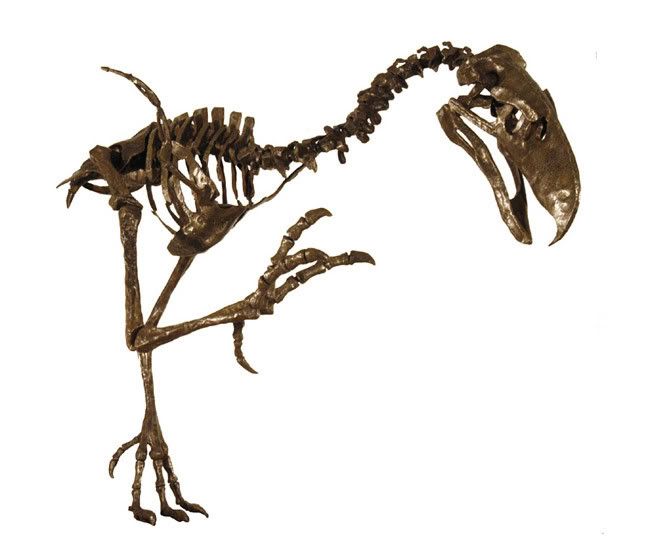Terrifying American Carnivore Was an Early BirdBy Jeanna Bryner
LiveScience Staff Writer
posted: 23 January 2007
10:39 am ET
A 7-foot-tall prehistoric bird with a monster-size noggin arrived in North America from South America long before a land bridge connected the two continents, a new study reveals.
The flightless, carnivorous terror birds—that's what scientists call them—likely hopped to North America via islands that came to form what is today the Isthmus of Panama, said Bruce MacFadden, a paleontologist at the Florida Museum of Natural History and lead author of the research.
The terror bird (Titanis walleri) belongs to the Phorusrhacid family and holds the record as the largest predatory bird known to have existed. Weighing in at a ground-shaking 330 pounds, it had a head larger than yours.
Past studies of skull and leg bones revealed the bird had a speedy stride and a deadly bite—it could chomp down on dog-sized prey with its hooked beak [illustration].
“We found that the Titanis fossils were 2 million years old and not 10,000 years old as had been suggested,” MacFadden said. “This also shows the last known occurrence of Titanis in the fossil record and reflects its extinction.”
The scientists arrived at the earlier date by analyzing some of the metallic elements locked up in the pores of Titanis fossil bones found in Texas and Florida—the only places in North America where fossils have been unearthed.
The new dating technique relies on nature to provide a time marker. As a dead animal degrades, its porous bones absorb surrounding groundwater, which contains specific levels of so-called rare-earth elements. As the local groundwater conditions change, so do the concentrations of the metals, stamping bones with a unique chemical signature that indicates the geologic time of death.
Until now, only one other scientist in England has applied this rare-earth element method to dating fossils. Other dating techniques rely on carbon, which is nearly degraded in most cases for fossil organisms, making it tricky to find an accurate age.
“We used rare-earth elements because they’re highly specific to certain time periods and different groundwater conditions,” MacFadden said.
The study will be published in the February issue of the journal Geology.
Link
 Win a FREE Membership!
Win a FREE Membership!